Priority & Endangered Species (Flora)
Sandarac Tree (Tetraclinis articulata). Lower Risk/Near Threatened (LR/nt) on the IUCN Red List
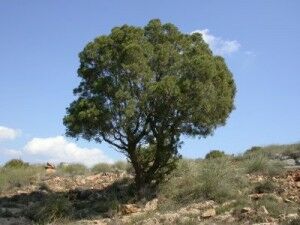 Sandarac Gum Tree is the national tree of Malta.
Sandarac Gum Tree is the national tree of Malta.
It is a small, slow-growing tree, often with two or more trunks from the base. The foliage forms in open sprays with scale-like leaves. It is one of only a small number of conifers able to re-grow by sprouting from stumps, an adaptation to survive wildfire and moderate levels of browsing by animals.
It was believed to be common on the Maltese islands long time ago, but now is restricted in few sites and quite rare. Recently it has been cultivated and used in agriculture and afforestation projects.
Maltese Centaury (Cheirolophus crassifolius). Critically Endangered (CR) on the UICN Red List
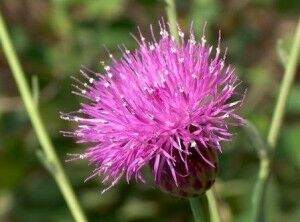 The Maltese Rock-centaury is a species of flowering plant. The name Cheirolophus means red head, while crassifolius mean thick leaves. The leaves are succulent and spoon shaped.
The Maltese Rock-centaury is a species of flowering plant. The name Cheirolophus means red head, while crassifolius mean thick leaves. The leaves are succulent and spoon shaped.
It is endemic to Malta, being the national plant of Malta since 1973.
Its natural habitats are cliffs and coastal valleys. However, it is critically endangered by habitat loss. It is scarce but widespread in the wild on the western cliffs of Malta, rare on the souther cliffs of Gozo, but frequent as a cultivated species in roundabouts. It is quite common in the limits of Wied Babu in the south east of Malta.
Maltese Salt Tree (Darniella melitensis). Endemic
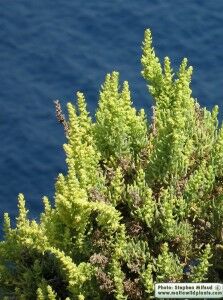 This is a dense shrub of moderate size (up to 2.5m) with small, cylindrical, fleshy leaves. Flowers are very small.
This is a dense shrub of moderate size (up to 2.5m) with small, cylindrical, fleshy leaves. Flowers are very small.
The single seeded fruit has five petal-like “wings” which serve for its dispersion by wind
The Maltese Salt Tree grows mainly on coastal cliffs, but is also found in a few inland localities, especially on hillsides in Gozo.
Scarce, though locally common.
African tamarix (Tamarix africana)
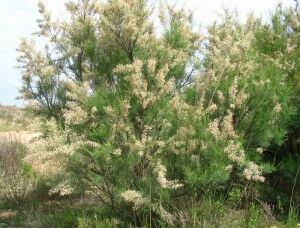 This medium-sized tree has a rough, grey trunk and numerous branches covered with small leaves which resemble those of Cypress.
This medium-sized tree has a rough, grey trunk and numerous branches covered with small leaves which resemble those of Cypress.
The generic name originated in Latin and may have referred to the Tamaris River in Hispania Tarraconensis (Spain).
The pink to white flowers appear in dense masses on 5-10cm long spikes at branch tips from March to September.
Indigenous on Gozo and Comino, it is probably also on the island of Malta. Common, but indigenous trees are rare though.
Maltese Pyramidal Orchid (Anacamptis urvilleana). Endemic
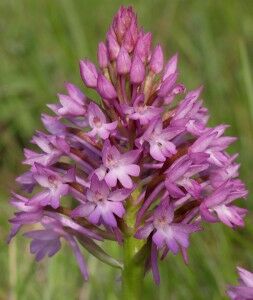 Found only in the Maltese Islands, this endemic orchid with its delicate flowers is accustomed to living in harsh and dry garigue and steppe.
Found only in the Maltese Islands, this endemic orchid with its delicate flowers is accustomed to living in harsh and dry garigue and steppe.
It resembles the Common Pyramidal Orchid, but generally it is smaller with pale, pink or white flowers.
Some plants were found recently in the Gargano peninsula in Puglia (Italy) and was said to belong this species.
*IUCN International Union for Conservation of Nature
Many species are declining to critical population levels, important habitats are being destroyed, fragmented, and degraded, and ecosystems are being destabilised through climate change, pollution, invasive species, and direct human impacts. At the same time, there is also growing awareness of how biodiversity supports livelihoods, allows sustainable development and fosters co-operation between nations. This awareness is generated through products such as the IUCN Red List of Threatened Species™.
Further info: http://www.iucn.org/






